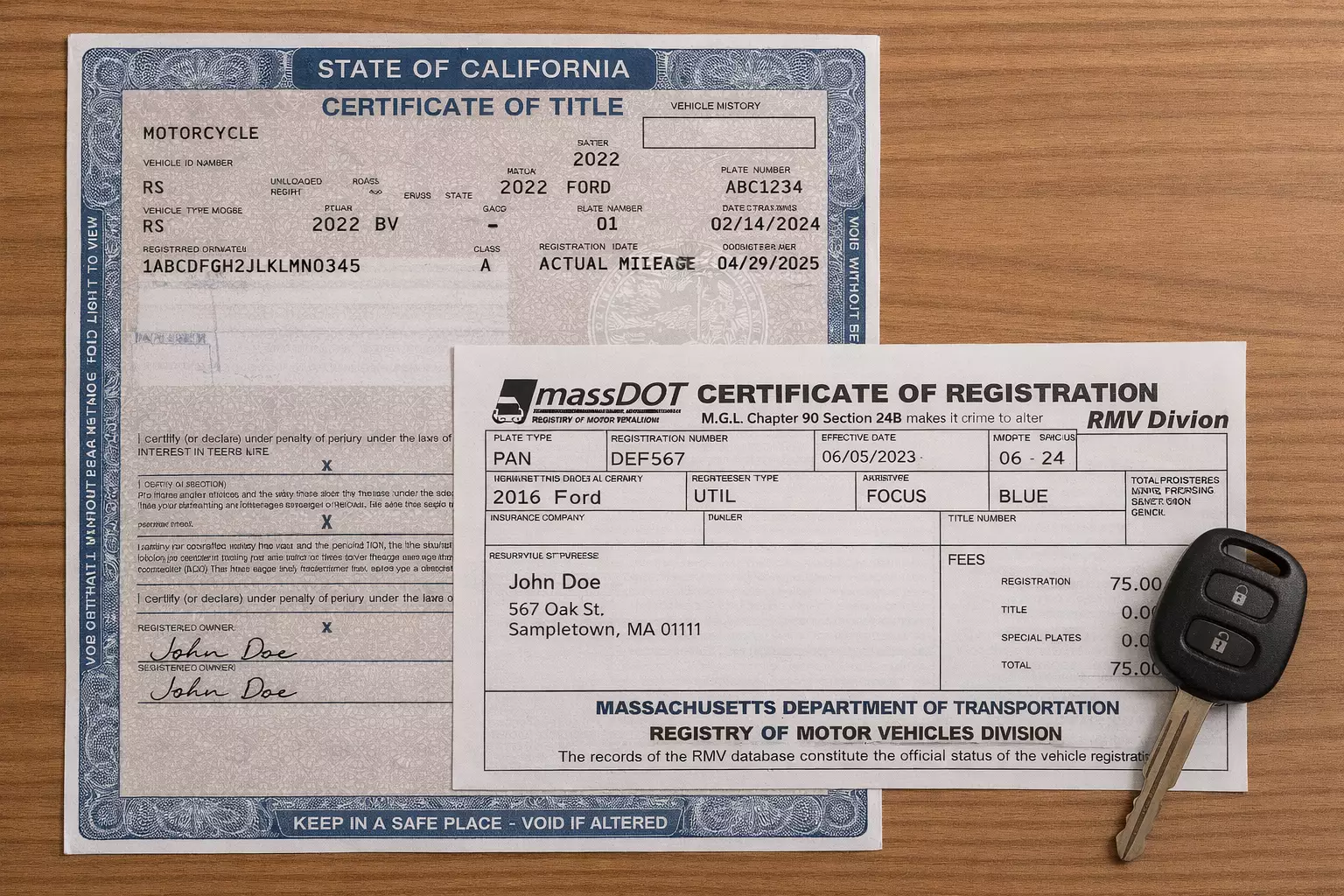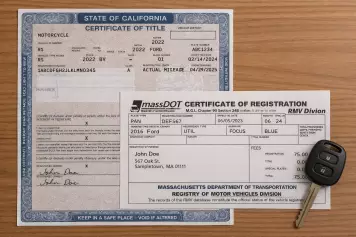Windshields are vital for ensuring safety and visibility while driving. A damaged windshield can impair vision and compromise road safety. Many drivers face windshield replacement due to flying debris, accidents, or severe weather.
Over 14 million windshields are replaced annually in the U.S. alone. Understanding your auto insurance coverage for such situations can save you from unexpected expenses and help you maintain a clear, safe view while driving.
This article will guide you through different types of windshield insurance coverage, how to determine if your policy includes this coverage, and the costs involved if you don’t have insurance.
Does Car Insurance Cover Windshield Damage?
Many auto insurance policies include coverage for windshield replacement under comprehensive coverage. However, the extent of coverage can vary depending on the insurance provider and your specific policy. Understanding the different types of coverage available can help you determine what your policy includes and what to expect when you need a windshield replacement.
Comprehensive Coverage
Comprehensive coverage is the most common type of coverage for windshield damage. It typically includes damage from non-collision events such as weather, vandalism, and road debris. For example, comprehensive coverage will likely pay for the repair or replacement if a rock flies up from the road and chips your windshield. This broad type of coverage covers many incidents that can cause windshield damage. However, it usually involves paying a deductible before the windshield insurance kicks in. The amount of the deductible can vary based on your policy.
Collision Coverage
Collision coverage may cover windshield damage resulting from an accident. If you get into a car accident and your windshield is damaged, collision coverage would help pay for the repair or replacement. This type of coverage is specifically for accidents where your vehicle collides with another object, whether a car, a tree, or a building. Like comprehensive coverage, collision insurance coverage also typically requires a deductible. The main difference is that collision coverage deals with incidents involving crashes, whereas comprehensive coverage handles non-collision events.
Full Glass Coverage
Full glass coverage is an add-on option that some insurance policies offer. This coverage is specifically for all types of glass damage, including windshields, windows, and sunroofs. The significant advantage of full glass coverage is that it often does not require you to pay a deductible. If your windshield is damaged, the auto glass insurance will cover the entire repair or replacement cost without you paying anything out of pocket. This type of windshield insurance coverage is beneficial if you want to avoid the deductible costs associated with comprehensive and collision coverage.
How to Claim Windshield Repair on Insurance
Knowing how to claim windshield repair on your insurance can save you time and money. Here are the steps you need to follow to ensure a smooth and efficient process.
Assess the Damage
The first step is to assess the damage promptly. Check the extent of the crack or chip on your windshield. Document the damage with clear photos from multiple angles. This documentation is crucial for your auto glass insurance claim. Assessment delays can lead to further damage, which might complicate the repair process and the windshield insurance claim.
Review Your Insurance Policy
Next, review your insurance policy to understand your coverage details. Check if your policy includes comprehensive or full glass coverage. Note the deductible amount you need to pay out of pocket. Contact your insurance provider for clarification if you're unsure about your coverage. Knowing your policy details beforehand can help avoid surprises during the claim process.
Contact Your Insurance Provider
Once you’ve assessed the damage and reviewed if your policy has windshield insurance coverage, contact your insurance provider to initiate the claim. Provide them with the details of the incident, including how and when the damage occurred. Be ready to share the photos of the damage and any other required documentation. Your insurance company will guide you through the next steps and inform you about any additional information needed.
Choose a Repair Service
After filing the claim, you’ll need to choose a repair service. Many insurance companies have preferred providers for windshield repairs. These providers are often pre-approved by the insurer, which can streamline the process. You can also select an independent repair shop, but ensure they are reputable and provide quality service. Verify that the repair shop handles the billing directly with your insurance company.
Complete the Repair
Once you’ve selected a repair service, schedule an appointment to complete the repair. Ensure the repair service submits all necessary paperwork to the insurance company. After the repair, double-check the quality of the work to ensure your windshield is properly fixed. Keep all receipts and documentation related to the repair for your records.
How Do I Know if My Insurance Covers Windshield Replacement?
Determining if your insurance covers windshield replacement is crucial to avoid unexpected expenses. Here are the steps to find out if your policy includes this coverage.
1. Review Your Insurance Policy
The first step is to review your insurance policy documents. Look for terms like "comprehensive coverage" and "full glass coverage." Comprehensive coverage typically includes protection against windshield damage from non-collision events such as weather, vandalism, and road debris. On the other hand, full glass coverage explicitly covers glass damage, including windshields, without requiring a deductible.
2. Contact Your Insurance Agent
After reviewing your policy, contact your insurance agent if you're unsure about your coverage. An agent can clearly explain what is included in your policy. They can also clarify any terms that might be confusing. Speaking directly with an agent can give you peace of mind and a better understanding of your insurance coverage.
3. Use Online Resources
Many insurance companies offer online portals or resources to check your policy details. Logging into your account can give you quick access to your coverage information. These portals often provide detailed descriptions of what is included in your policy, making it easier to determine if windshield insurance covers replacement.
4. Ask for a Policy Review
If you still have questions about your coverage, consider asking for a policy review. Your insurance company can review your policy and explain the coverage in detail. This can help you understand all aspects of your insurance and ensure you are adequately protected.
Windshield Repair Cost Without Insurance

While having windshield insurance coverage can significantly reduce these expenses, knowing the potential out-of-pocket costs is essential for effective financial planning. Let us dive into some details on windshield repairs without insurance.
Factors Affecting Cost
The cost of repairing or replacing a windshield depends on the vehicle's make and model, the extent of the damage, and the type of glass used. Luxury vehicles or cars with advanced features may require more expensive windshields. Similarly, the larger the damage, the higher the repair or replacement cost.
Average Cost of Windshield Repair
The average cost of windshield repair for small chips or cracks ranges from $50 to $150. This cost covers minor damages that can be fixed quickly without replacing the entire windshield. Repairing small chips or cracks is crucial to prevent them from spreading and causing more damage.
Average Cost of Windshield Replacement
The cost can be much higher if the damage is extensive and the windshield needs to be replaced. On average, full windshield replacement costs range from $200 to $1,000 or more. The price depends on the vehicle's make and model, with higher-end cars typically costing more. Some windshields have special features like rain sensors, heating elements, or acoustic glass, which can increase the replacement cost.
Additional Costs
In addition to the basic repair or replacement costs, there may be additional expenses. These can include labor costs, fees for mobile repair services, or the cost of calibrating Advanced Driver Assistance Systems (ADAS) if your vehicle is equipped with these features. Calibration ensures that features like lane departure warnings and automatic braking systems function correctly after the windshield replacement.
Many drivers face the common issue of replacing their windshields. Understanding your insurance coverage options is crucial. Windshield insurance coverage can help cover the costs of damage, ensuring it does not break your wallet.
Filing a claim involves assessing the damage, reviewing your policy, contacting your insurance provider, choosing a repair service, and completing the repair. Review your policy or contact your insurance agent if you're unsure about your coverage. Without insurance, repair costs range from $50 to $150 for minor damage, while replacements can cost $200 to $1,000 or more.
Addressing windshield damage promptly is essential for safety and cost savings. Always review your insurance policy to ensure adequate coverage and know the steps to take in case of windshield damage.








![Best Sites to Check a Car’s History [2025 Review]](https://media.infopay.net/thumbnails/K8lMeG2QLjE46LPqZlmoi6SunKKdT5qvlaRZk6e1.webp)










![Best Sites to Check a Car’s History [2025 Review]](https://media.infopay.net/thumbnails/K8lMeG2QLjE46LPqZlmoi6SunKKdT5qvlaRZk6e1-w356.webp)
